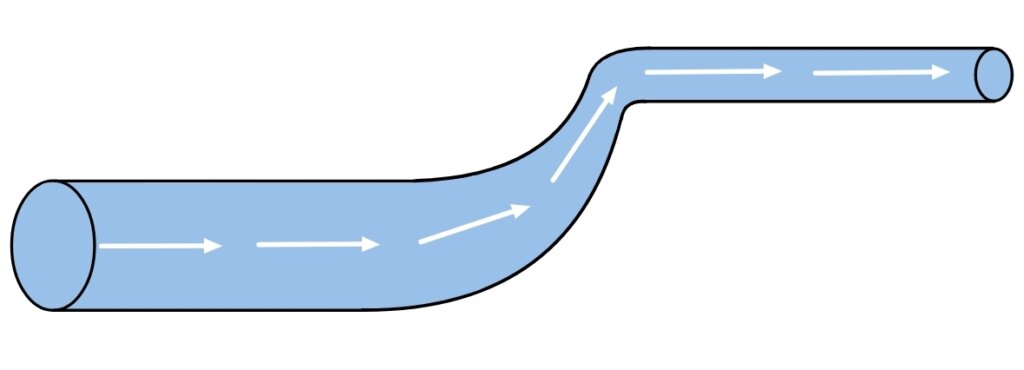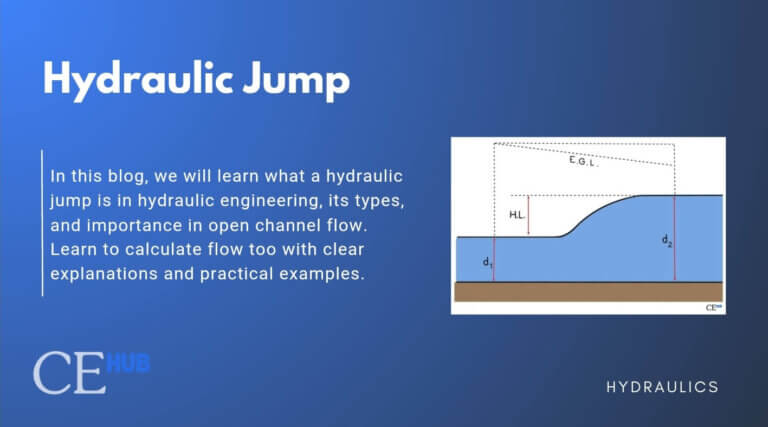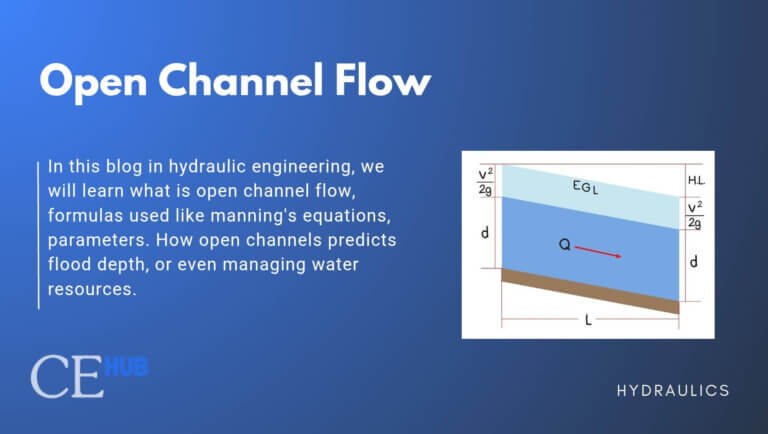Understanding the Bernoulli Equation in Fluid Mechnics

DEFINITION
The Bernoulli Equation states that in a steady, incompressible, and frictionless flow, the total mechanical energy of the fluid remains constant along a streamline.
It is based on the Conservation of Energy where it states that “Energy cannot be created or destroyed—only transferred.“
The Bernoulli Equation In Fluid Mechanics is a fundamental principle that helps in analyzing Fluid brand dynamics
Background Derivation
Bernoulli’s equation is derived from Euler’s Equation of Motion along a streamline under a steady incompressible flow.
![]()
Where: = Density of the fluid (kg/m³)
= Change in elevation (m)
= Change in velocity (m/s)
= Change in pressure (N/m²)
Step 1: Integrate the Equation
Step 2: Divide g
This is BERNOULLI’S EQUATION!
Bernoulli Equation Formula
The general form of the Bernoulli Equation is:
![]()
Where:
P – Pressure (Pa or N/m²) – Specific weight of fluid N/m³
v – Flow velocity (m/s)
z – Elevation above a datum (m)
H – Total head (m)
This equation expresses energy in meters of fluid (called “head”), which makes it easy to visualize using a piezometer or manometer.
Key Components of the Equation
| Term | Name | Physical Meaning |
|---|---|---|
| Pressure Head | Energy due to fluid pressure |
| Velocity Head | Energy due to motion (kinetic) |
| Elevation Head | Gravitational potential energy |
| Total Head | Total mechanical energy of the fluid |
Modified Bernoulli Equation (With Head Loss and Pumps)
In real-world engineering application, friction exists. Therefore, it is important to consider this in the overall system by modifying the equation.
![]()
| Term | Description |
|---|---|
| Head loss due to friction and fittings |
| Head added by a pump |
| | Head extracted by a turbine |
Example : Flow between two points in a Pipe
Consider a flow between two points in a pipe. At Point 1, the pressure is 400 kPa, the velocity is 2.5 m/s, and the elevation is 12 meters. At Point 2, the velocity is 3 m/s, the elevation is 8 meters, and the pressure is unknown. There is no pump in the system, and the head loss is 2 meters. The specific weight of the fluid is given as γ = 9810 N/m³. Find pressure at point 2.
Write Bernoulli with head loss
Bernoulli’s Equation with Correction Factor
Bernoulli’s Equation is often taught in school based on ideal fluids but if you want to major in Water Resources Engineering, it is important to know that water isn’t always idealized. In real-world engineering, the flow will be uniform (usually taught in school), laminar, and turbulent. Thererfore, I will guide you to ensure that your analysis matches the real behavioural of fluids in real-world engineering by modifying the Bernoulli Equation once again using a correction factor.
A brief summary of the Modified Bernoulli Equation with correction factor:
Typical Values of α:
| Flow Type | Velocity Profile | α\alphaα |
|---|---|---|
| Ideal (uniform) flow | Flat profile | 1.0 |
| Laminar pipe flow | Parabolic profile | 2.0 |
| Turbulent pipe flow | Almost flat profile | 1.05–1.15 |
Conclusion: The Bernoulli Equation in Fluid Mechanics plays a crucial role in Civil Engineering applications. It provides a fundamental understanding of fluid flow behavior and pressure distribution in various systems. In the real world, engineers frequently rely on the Bernoulli Equation to analyze and design hydraulic systems and structures efficiently but it is also important to know various factors affecting the behavior of Fluids.






